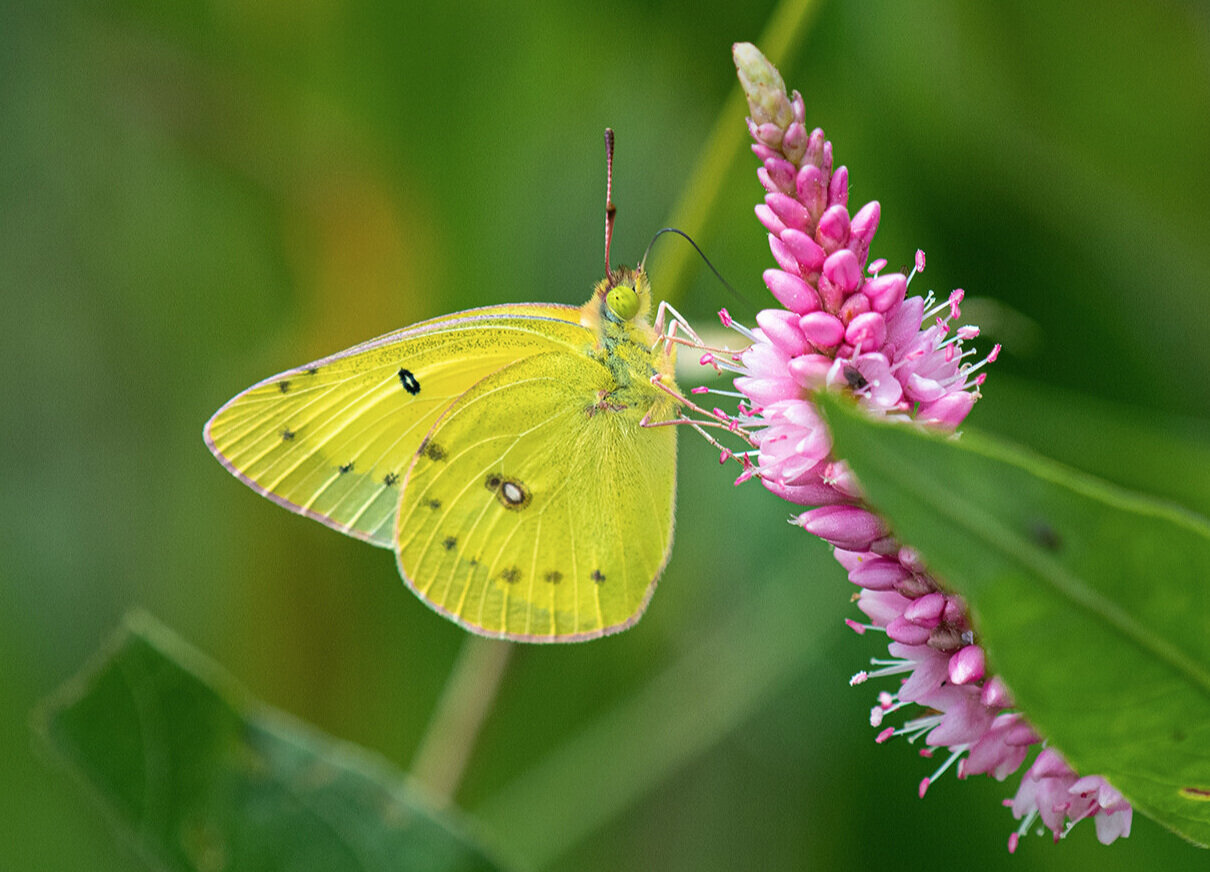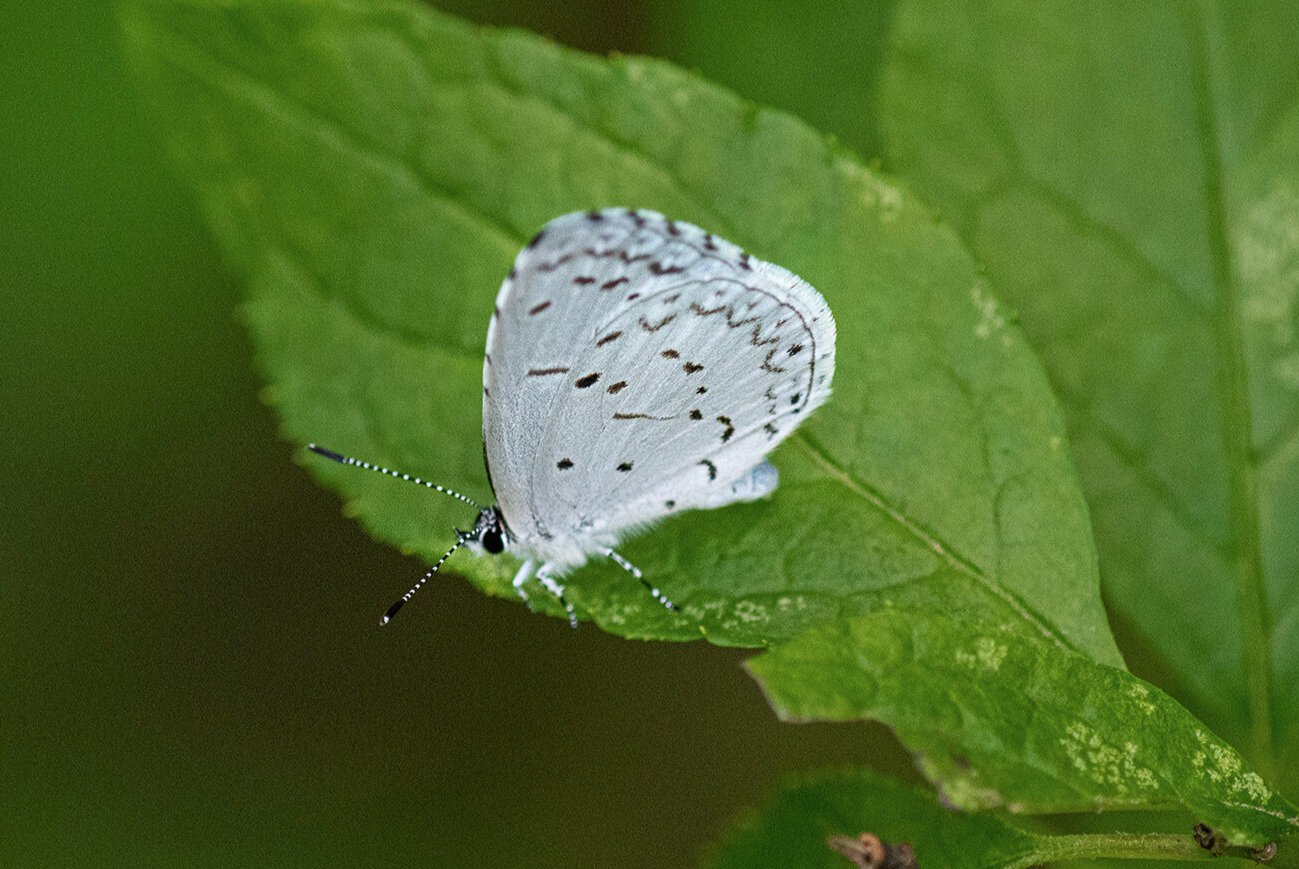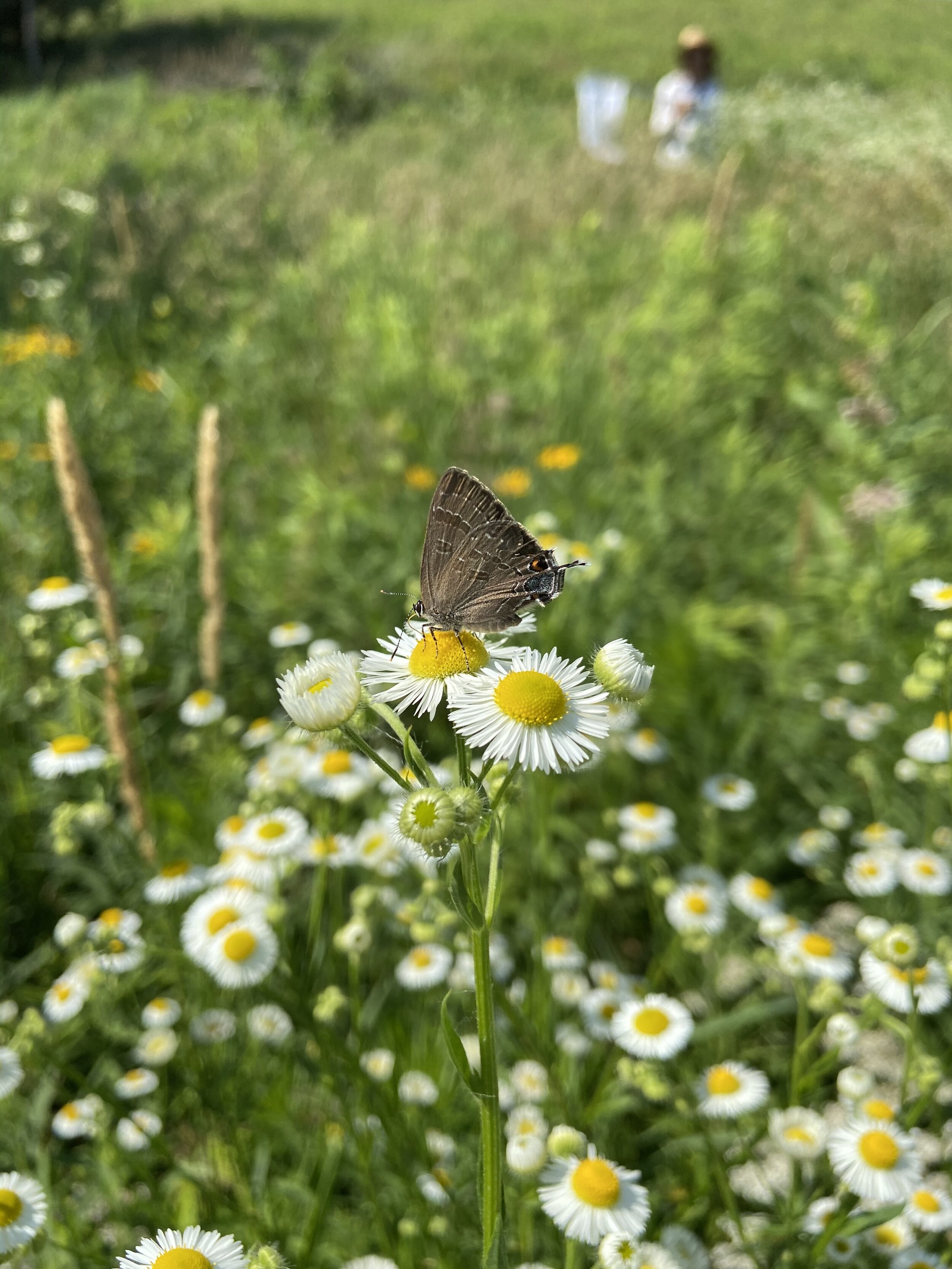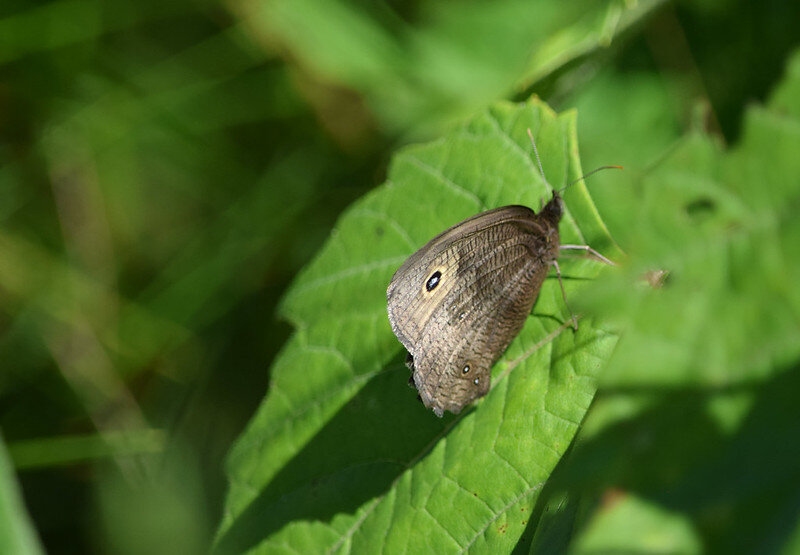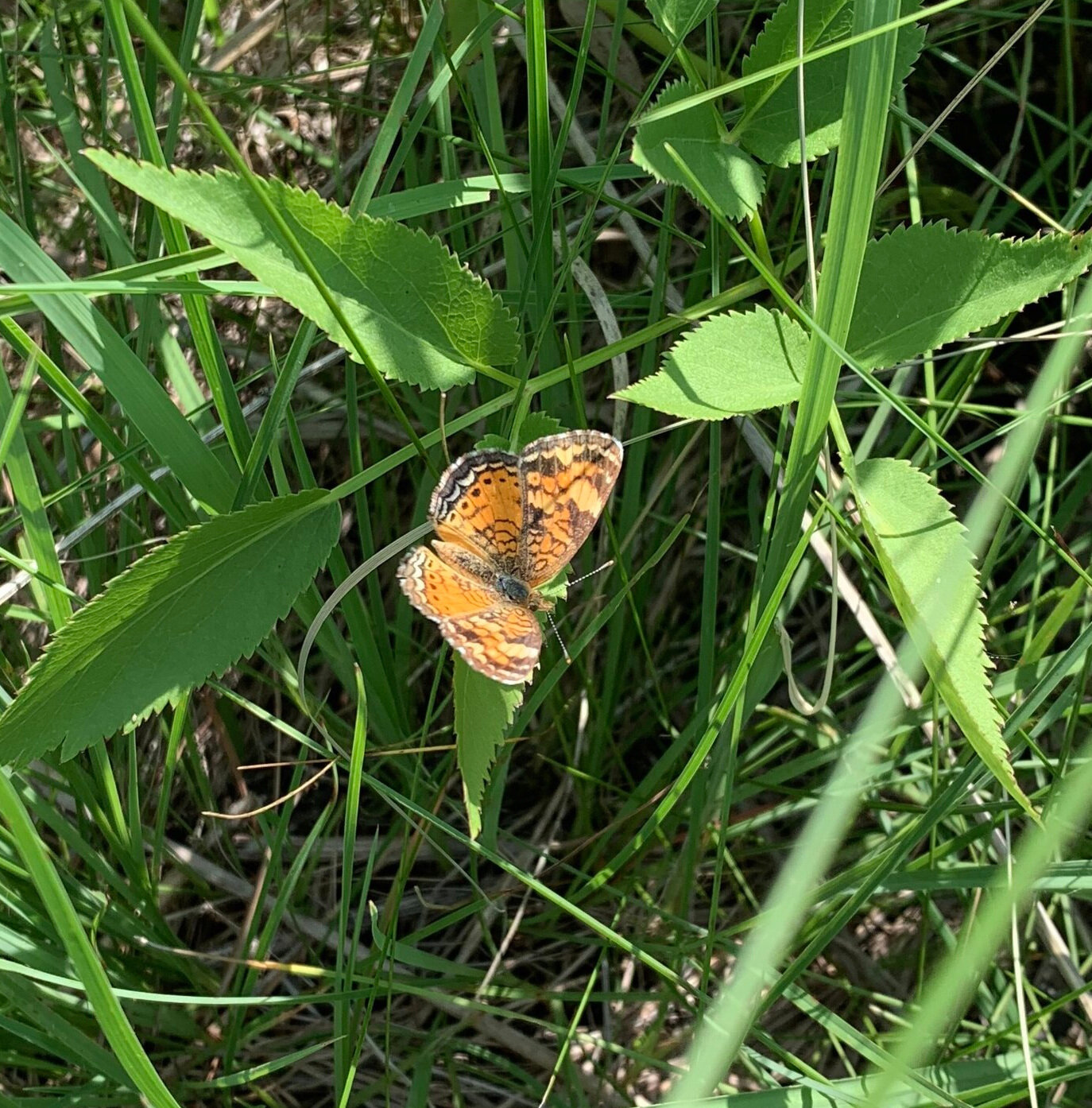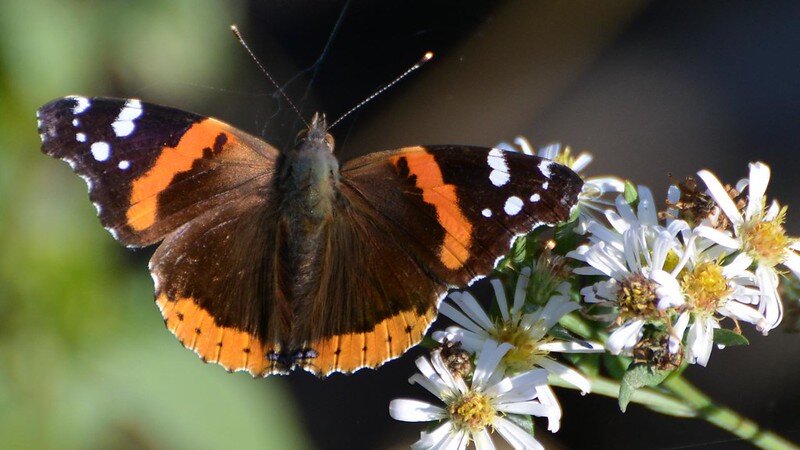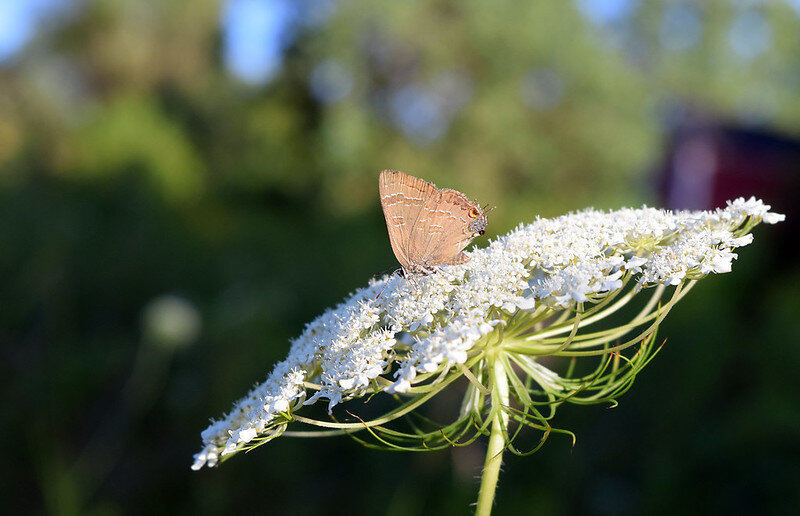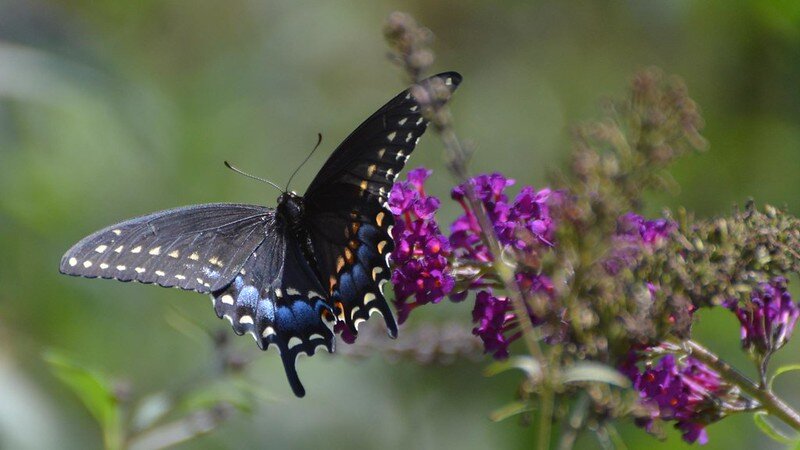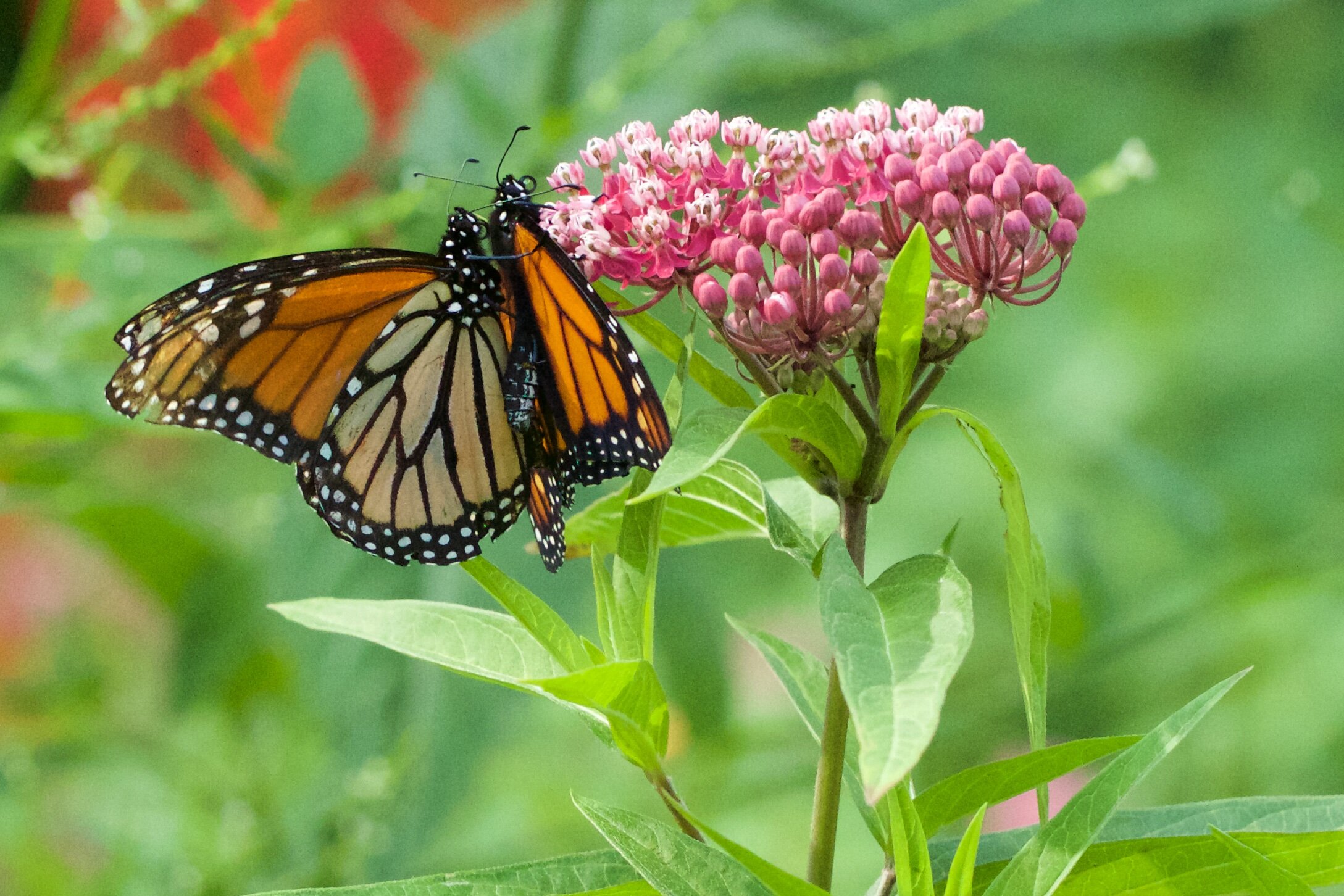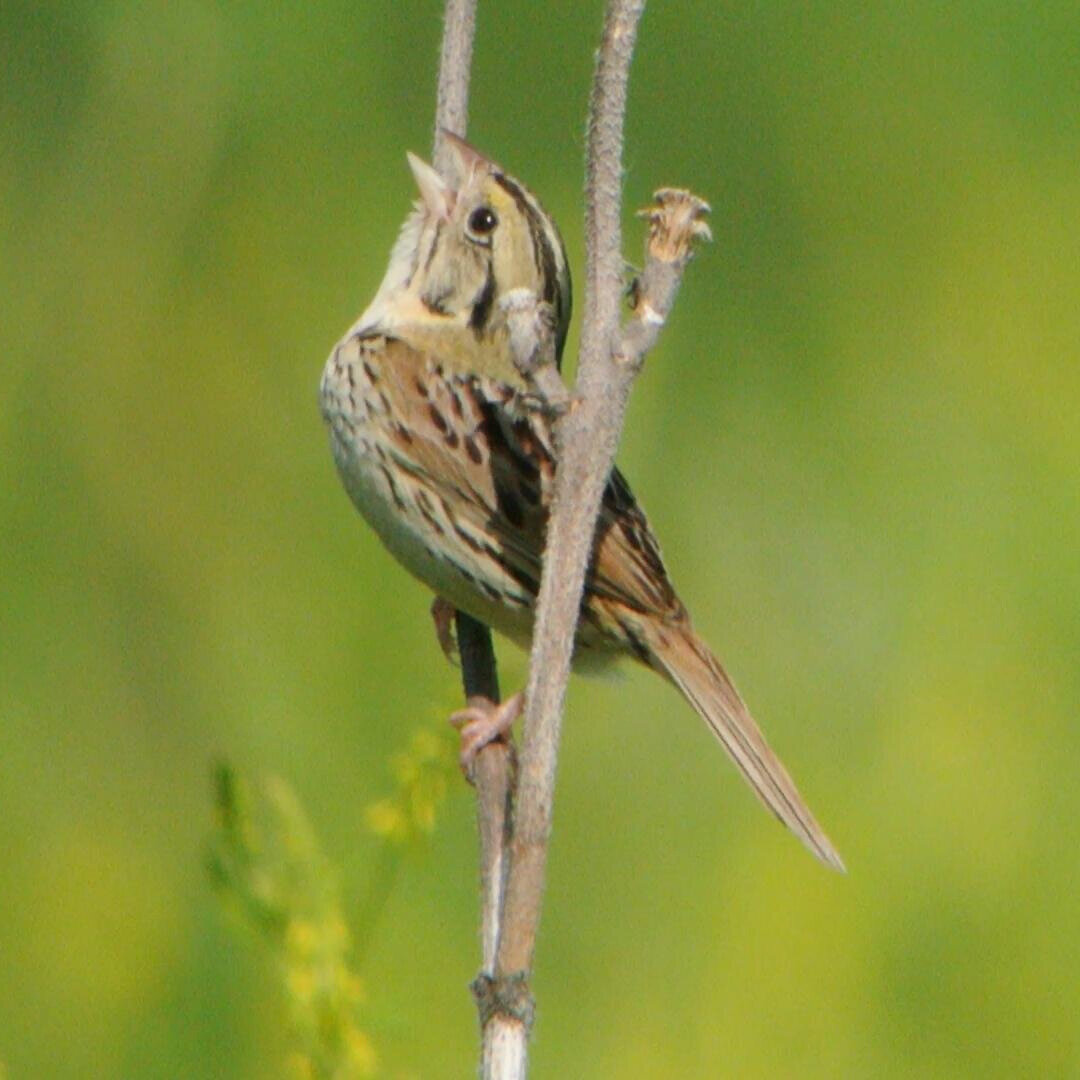Mark first learned of the Motus Wildlife Tracking System, “The world’s largest collaborative automated radio telemetry array,” in the fall of 2018 while visiting Cedar Grove Ornithological Station along Lake Michigan. Since 1950, researchers have banded around 44,000 raptors at the station with metal bands. Recovery data from the bands comes from other banding sites that trap banded birds or if someone finds and reports a banded bird. Overall the recovery rate is very low from banded birds.
Ideally, wildlife could be tracked in migration and the Motus tracking system allows for tracking stations to record when radio tagged wildlife, mostly birds that fly within about 7.5 miles (or in the area up to 175 square mile circle surrounding the tower) of the tracking tower.
Tracking wildlife is much easier when they can simply fly past to be recorded! The new Motus tower will achieve that, once birds are tagged. Photo by Monica Hall
Birds Canada took the lead on erecting the original Motus tower system and working with scientists to have wildlife fitted with radio telemetry. When a tagged individual triggers a “tag report,” the data is stored in an on-site computer. The encrypted data is downloaded every three months to Birds Canada and they report results to the tracking station and scientists.
An example of knowledge gained was from a fall migration study of warblers looking at stopover locations along the east coast. They learned the major fall stopover migration locations and that some warblers would fly south along the coast, refuel, then fly north before turning around and heading south.
From the Motus Wildlife Tracking System: “Motus is the world’s largest collaborative automated radio telemetry array. Motus is the central hub for detection data from more than 935 receiving stations as well as metadata from stations (e.g. location, deployment dates, height, antenna bearing) and tags (e.g. species, location and date deployed). Data from across the network is then provided to researchers and a condensed version shared with the public.”
Here are links to their website that includes an informational video, by the numbers, tracking data for some species, map showing the receivers locations, and numbers of wildlife tagged.
A team works on erecting the Madison Audubon Motus tower at Goose Pond Sanctuary. Photo by Mark Martin
Our very own Motus tower
The Madison Audubon Motus tracking tower is located at Hopkins Road Prairie, the highest point within Goose Pond Sanctuary. The tower was activated on July 22, 2020.
This was an involved project with many parts. Bill Mueller, retired Director from the Western Great Lakes Bird and Bat Observatory, provided guidance to get us started. The Observatory is coordinating placement of Motus towers in southern and eastern Wisconsin and is the Wisconsin contact with Birds Canada. Our tower is the 10th motus tower in Wisconsin! Hopefully many more towers will come on line in the next few years.
The first part of the project was fundraising. Curt and Arlys Caslavka and James E. Dutton Foundation provided major funding along with additional funding from Madison Audubon.
Once funding was secured we were fortunate to have volunteer Don Schmidt, metal artist for Wingspan, secure the metal, weld and coordinate erection of the tower from securing the base in three feet of cement to erecting the 21-foot pipe. Volunteer Chip Plummer, electrician, assisted with hooking up the solar panel, battery, grounding rod and computer. Graham Steinhauer assisted with all phases of the project along with Tanner Pettit, summer intern who was also pleased to be involved.
As more towers are erected, more research projects will be using the Motus tracking system. We look forward to providing you with tracking data. Thanks to the donors, Graham, volunteers, Western Great Lakes Bird and Bat Observatory, and Birds Canada for helping with the project.
Written by Mark Martin and Sue Foote-Martin, Goose Pond Sanctuary resident managers
All photos by Mark Martin









